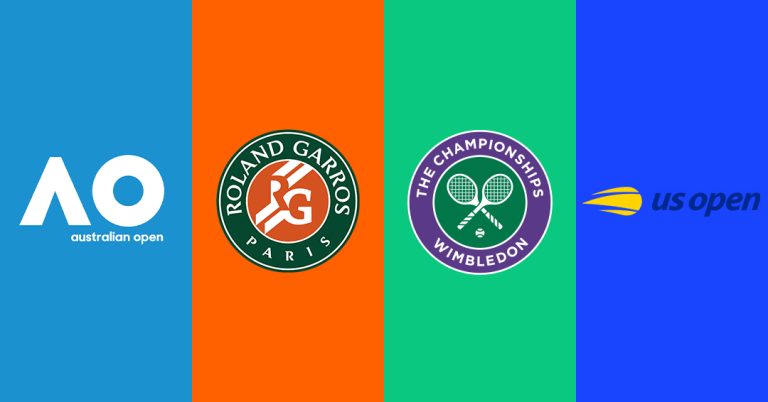Home » Unveiling the Grand Slam: A Complete Guide

Unveiling the Grand Slam: A Complete Guide
The Grand Slam in tennis stands as an epitome of athletic achievement, a feat so monumental that only a select few in the sport’s history have managed to conquer it. Let’s delve into the intricacies of this prestigious accomplishment, exploring its essence and the various versions that grace the annals of tennis folklore.
Understanding the Grand Slam
At its core, the Grand Slam entails clinching victory in all four of the world’s most illustrious tennis tournaments within a single calendar year. These iconic events are none other than the Australian Open, Roland Garros, Wimbledon, and the US Open. Originating from the game of bridge, where it signifies the ultimate triumph, the term “Grand Slam” seamlessly transitioned into tennis, symbolizing unparalleled dominance on the court.
The Magnificent Four: A Test of Versatility
Each of these tournaments, hosted by nations steeped in tennis history, represents the pinnacle of the sport, displaying diverse playing surfaces and challenging conditions. The Australian Open unfolds on synthetic courts, Roland Garros on the iconic red clay, Wimbledon on the hallowed grass, and the US Open on hard courts. Triumphing across these distinct terrains demands not just skill but adaptability, distinguishing the victor as a true master of the game.
The Pursuit of Greatness: Various Iterations of the Grand Slam
While the Calendar Grand Slam remains the ultimate aspiration, achieved only by tennis legends of bygone eras, there exist other notable iterations of this lofty goal.
- The Calendar Grand Slam: A Rarity of the Ages
The Calendar Grand Slam, the pinnacle of tennis, requires a player to win all four majors in a year. A few remarkable performers throughout history have only achieved this achievement. They include Don Budge, Rod Laver, Maureen Connolly, Margaret Smith Court, and Steffi Graf, whose legacy inspires future tennis champions.
- The Virtual Grand Slam: A Testament to Consistency
If you miss the Calendar Grand Slam, the Virtual Grand Slam is tempting. The Small Slam involves winning the four majors consecutively, but not in a year. By achieving this achievement, tennis legends Novak Djokovic and Serena Williams have shown their enduring superiority.
- The Career Grand Slam: A Legacy of Excellence
The Career Grand Slam honors players who have won all four major events at least once in their careers. Fred Perry, Andre Agassi, Roger Federer, Rafael Nadal, Billie Jean King, and Maria Sharapova all left their mark on tennis’ rich tapestry by joining this hall of fame.
- The Golden Grand Slam: A Fusion of Glory
The Golden Grand Slam includes winning all four major events and a Summer Olympics gold medal, elevating the Grand Slam to new heights. The Golden Grand Slam, achieved by Andre Agassi, Rafael Nadal, Serena Williams, and Steffi Graf, is the pinnacle of sports achievement, combining individual brilliance with country pride.
- The Super Slam: A Testament to Versatility
Players who win all four major tournaments achieve the Super Slam, a rare feat,—singles, doubles, and mixed doubles. The Super Slam, played by Martina Navratilova, Margaret Smith, and Doris Hart, represents variety and expertise in all aspects of the game, cementing its status as the pinnacle of tennis brilliance.
In conclusion, the tennis Grand Slam symbolizes perfection, determination, and unmatched expertise. The Grand Slam, whether it’s the Calendar Grand Slam or one of the many variations in tennis folklore, inspires and captivates tennis fans worldwide, demonstrating the human spirit’s limitless potential on and off the court.
